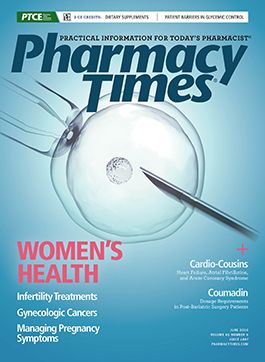Publication
Article
Pharmacy Times
Pharmacy Technician Regulation
Author(s):
The role of a pharmacy technician has expanded with the increasingly clinical and patient-driven focus of pharmacy practice.
The role of a pharmacy technician has expanded with the increasingly clinical and patient-driven focus of pharmacy practice. Through this elevation of responsibility, a clear gap in standardization has become prominent throughout the United States.
Although progress has been made in regulating the technician profession, the requirements vary greatly among the states that do regulate technicians. According to the Pharmacy Technician Certification Board (PTCB), 23 states and the District of Columbia regulate pharmacy technicians and require national certification as part of these regulations.1 Of the remaining states, 22 have regulations for pharmacy technicians, although national certification is not one of them.1 Additionally, there are still 5 states that do not regulate pharmacy technicians as of December 2015: Colorado, Hawaii, New York, Pennsylvania, and Wisconsin.1
Many states require licensure or registration, in which the state Board of Pharmacy (BOP) grants permission for an individual to practice as a pharmacy technician after he or she completes certain criteria.2 Registration is important for pharmacy practice, as it creates a record of all pharmacy technicians working in the state, giving each state’s BOP the ability to monitor technician activity and accountability. This helps technicians practice to their full potential.
The pharmacist-to-pharmacy technician ratio is another state-specific regulation with a lack of standardization across the United States, as it is up to each state to limit how many technicians a pharmacist may supervise at one time. This ratio usually varies from 1:2 (1 pharmacist for every 2 technicians) to 1:6. Some states will vary the ratio depending on the practice setting or allow a higher ratio if one or more of the technicians is certified. Other states do not even have a set ratio at all, instead allowing each pharmacy practice to determine an appropriate number of technicians to be supervised by a pharmacist. The Online Table contains a summary of state pharmacist-to-technician ratios.
Table: State Pharmacist-to-Technician Ratios
State
Required Ratio
Alabama
1:3
Alaska
None
Arizona
None
Arkansas
1:3
California
1:2
Colorado
1:3
Connecticut
1:3 institutional, 1:2 retail
Delaware
None
Florida
1:4
Georgia
1:2 unless 2 are certified, than 1:3
Hawaii
None
Idaho
1:6
Illinois
None
Indiana
1:4
Iowa
None
Kansas
1:2
Kentucky
None
Louisiana
1:3
Maine
None
Maryland
None
Massachusetts
1:4
Michigan
None
Minnesota
1:3 unless 1 is certified, than 1:4
Mississippi
1:2
Missouri
None
Montana
1:3
Nebraska
1:3
Nevada
1:3
New Hampshire
None
New Jersey
1:2, unless 1 is certified, than 1:3
New Mexico
None
New York
1:2
North Carolina
1:2, unless seek BOP approval
North Dakota
1:3 retail, 1:4 hospital
Ohio
None
Oklahoma
1:2
Oregon
None
Pennsylvania
None
Rhode Island
None
South Carolina
1:3
South Dakota
1:3 retail, none for hospital
Tennessee
1:4 if 1 is certified, 1:3 if not
Texas
1:4
Utah
1:3
Vermont
None
Virginia
1:4
Washington
1:3
West Virginia
1:4
Wisconsin
1:4 BOP can approve higher ratio
Wyoming
1:3
BOP = Board of Pharmacy
Participants in Our Voice, a Pharmacy Technician Journaling Initiative created by the American Association of Pharmacy Technicians, responded to survey questions pertaining to each state’s pharmacist-to-technician ratio. The results were complex: 36% of technicians did not know if their state had a requirement, while others responded with ratios that had just recently been abolished or revised by individual state BOP. Although the ratio of pharmacist to technicians is not standardized, and not regulated in some states at all, 18% of Our Voice participants encountered an error where they felt it was related to a high ratio of technicians to pharmacist.
Pharmacy technician education is another key component in which regulations are not standardized. Only 27% of Our Voice participants practice in states that require education for pharmacy technicians, although 37% of these participants noted that completion of the Pharmacy Technician Certification Exam (PTCE) is required to practice in their state. However, the PTCB will require all new candidates to complete an American Society of Health System (ASHP) or Accreditation Council for Pharmacy Education (ACPE) accredited pharmacy technician training program by 20203; with this additional requirement, an increase in state-specific educational requirements may follow the schedule of the PTCB.
Although there are many regulations that impact pharmacy technicians, many technicians are also involved in regulatory surveys and accrediting bodies through their place of employment. Depending on the pharmacy practice setting, Our Voice participants work with The Joint Commission (18%), ASHP/ACPE accreditors (11%), their state BOP (53%), or the FDA (5%). They also hold varying levels of responsibility in this matter: 60% have minimal involvement, assisting only during the regulatory visits, while 11% are majorly involved, helping to prepare and submit requested documents, as well as conducting follow-up evaluations. The remaining 29% are not involved in any survey or regulatory operations. Pharmacy regulations continue to evolve as pharmacy technicians continue to experience growth in their responsibilities and career options. With this continuous expansion, patient safety must always be at the forefront. An increase in education and registration requirements for pharmacy technicians will ultimately serve to help keep patients safe.
Kristy Malacos, MS, CPhT, is the pharmacy administrator at Magruder Hospital in Port Clinton, Ohio, through Pharmacy Systems, Inc.
References
- PTCB certified pharmacy technicians by state. Pharmacy Technician Certification Board website. ptcb.org/who-we-serve/pharmacy-technicians/by-state#.VzjW9vkrK00.
- Marberry SO, Quist C, Decka D. Accreditation, certification, licensure, registration. Healthcare Design magazine website. healthcaredesignmagazine.com/article/accreditation-certification-licensure-registration. Published November 22, 2011.
- Certification program changes. Pharmacy Technician Certification Board website. ptcb.org/about-ptcb/crest-initiative#.VzkkmvkrK00.







